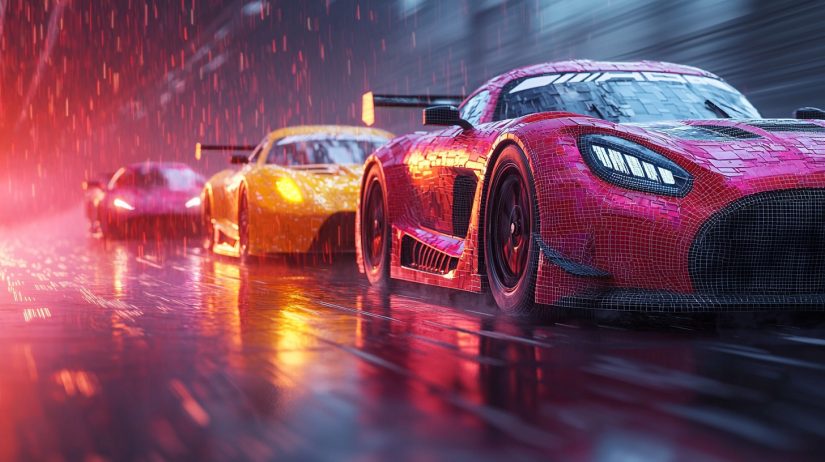For many, the thrill of speed and the love for cars start long before they ever get behind the wheel in real life. Before owning a car in real life, there’s a lot to think about — keep in mind before buying a car, you’ll need to get a driver’s license, decide whether to buy or rent a vehicle, and secure insurance. It’s a process that takes time and effort.
But in the world of video games, racing skips all the hassle. Few genres are as iconic as car racing, letting you jump straight into the adrenaline-pumping action. The roar of engines and screech of tires have captivated players for decades, delivering high-speed thrills right from your couch. From the blocky, pixelated cars of the past to today’s hyper-realistic vehicles, the evolution of this genre is nothing short of extraordinary.
The Origins: Where It All Began
Let’s take a trip down memory lane. The roots of car racing games trace back to the simplest concepts: a car, a track, and the need for speed. Early classics like Gran Trak 10 and Night Driver set the stage with straightforward gameplay — dodge obstacles, stay on course, and beat the clock. These basics laid the foundation for one of gaming’s most dynamic genres.
Accelerating Progress: The 80s and the 3D Breakthrough
The 1980s were a turning point for racing games, driven by rapid tech advancements. Games like Pole Position revolutionized the genre with detailed tracks and a third-person perspective, putting players in the driver’s seat. Then Hard Drivin’ pushed boundaries with 3D graphics, offering thrilling loop-the-loops and steep inclines. Racing games shifted from simple entertainment to immersive experiences.
The Golden Era: Speeding through the 90s and Early 2000s
The 1990s were a golden age for racing games. The rise of arcade cabinets and home consoles brought iconic titles like Need for Speed and Gran Turismo. Need for Speed captured the thrill of exotic cars and street racing, while Gran Turismo impressed with its realism and driving physics, blending excitement with precision.

The 2000s brought further innovation. Burnout combined high-speed racing with spectacular crash sequences, turning races into high-energy action moments that amazed players.
The Rise of Online Multiplayer: Racing Together
The 2000s also introduced online multiplayer, transforming solo races into global competitions. Games like Forza Motorsport built communities where players could race, share tips, and trade cars. Racing games became social hubs, connecting gearheads worldwide.
A Drive Toward Realism: Pushing Technology’s Limits
Today, games like Project CARS and Assetto Corsa blur the line between games and reality. Stunning visuals and complex mechanics — like tire wear and fuel consumption — demand skill and knowledge of vehicle dynamics. VR headsets, cockpit rigs, and force-feedback steering wheels immerse players in ways once unimaginable, turning racing games into hyper-realistic simulations.
Beyond the Track: Expanding the Gameplay Experience
Modern racing games have grown beyond the track. Story modes, open worlds, and RPG-like elements add depth to the genre. Games like Need for Speed Underground embrace car culture with customization, while The Crew and Forza Horizon offer massive landscapes and countless activities, blending racing with exploration.
The Electric Revolution: Racing into a Sustainable Future
The genre is also evolving ideologically. As automakers shift to electric and sustainable energy, racing games are following. Titles like Forza Horizon 4 feature hybrid and electric vehicles, reflecting societal trends and appealing to eco-conscious gamers. The future of racing games balances speed with responsibility.
Nostalgia Revisited: Honoring the Past
Even as racing games race toward the future, they honor the past. Remakes of classics like Crash Team Racing Nitro-Fueled and Hotshot Racing bring nostalgia to life while celebrating the genre’s history. These reimagined titles prove retro charm still resonates with players and holds a permanent place in the digital garage.

